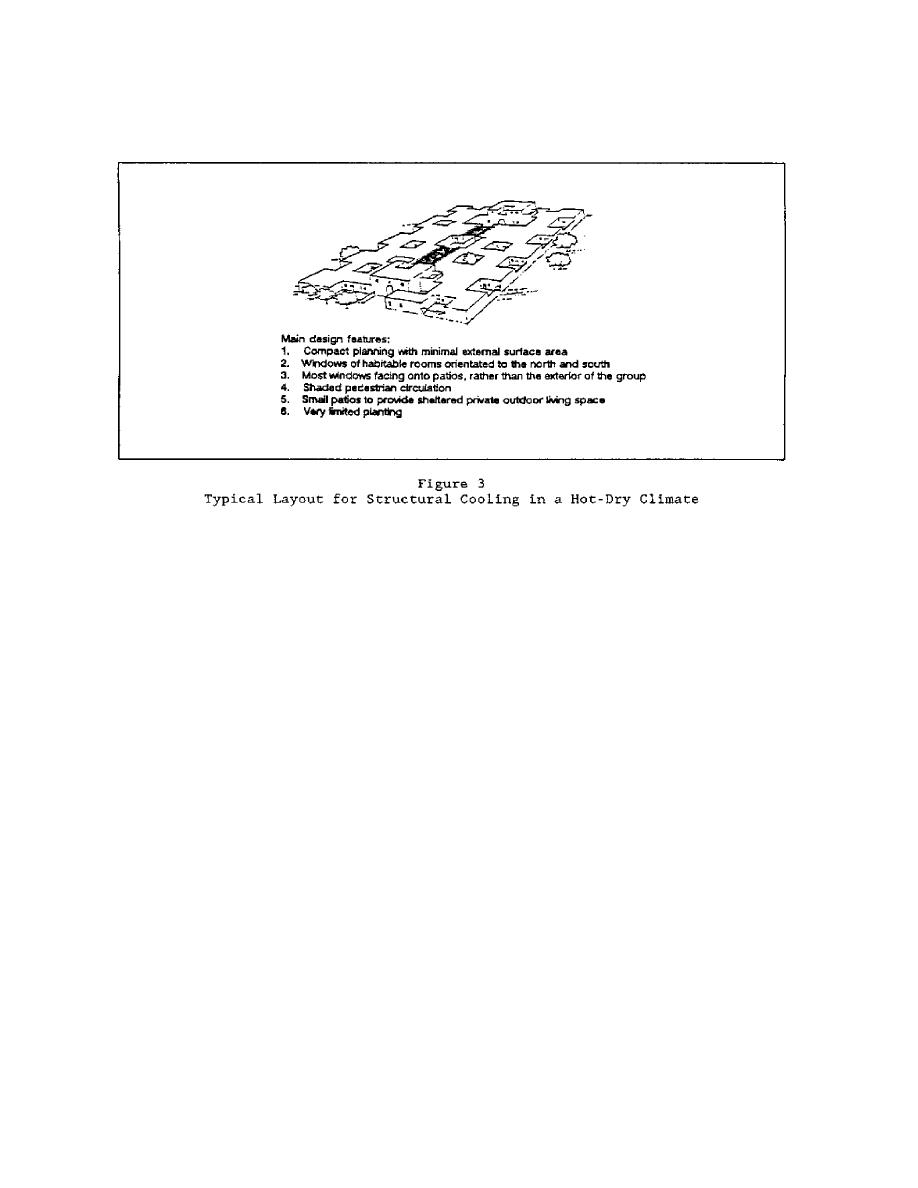
MIL-HDBK-1011/2
2.2.3
Combinations of Bodily and Structural Cooling. For bodily cooling,
ventilation is used both day and night to dissipate the solar heat absorbed by
the lightweight building envelope and to cool the building's occupants.
Nocturnal structural cooling does not allow daytime wind-induced
bodily cooling. In order to take advantage of the night coolness stored in a
structural mass, the building must be unventilated during the day. Thus,
structural cooling and daytime bodily cooling by natural ventilation are
mutually exclusive. Daytime air movement for body cooling may be achieved by
mechanically stirring the air with ceiling fans or some other mechanical
equipment. Natural ventilation can be used for bodily cooling during the
night when the structure is being ventilated. However, there may be limits to
the rate at which cold night air can be introduced to occupied spaces. This
depends on the air temperature and the use of the space.
2.2.4
Evaporative Cooling. Evaporative cooling may be used in hot-arid
climates where water is available and is most effective in regions with high
dry bulb temperatures (greater than 80deg.F or 26.7deg.C) and wet bulb
temperatures
of 65deg.F (18.3deg.C) or less. Evaporative cooling functions through
absorption of
sensible heat by water from the air in the phase change of liquid to vapor.
Evaporative cooling may be achieved by mechanical or passive (wind induced)
means. Two types of evaporative cooling exist: direct, in which the building
supply air is humidified, and indirect, in which it is not. A combination
indirect and direct evaporative cooling can create cooler temperatures than
that of either type alone. A passive direct evaporative cooling system can
reduce dry bulb temperature by 40 to 50 percent of the difference between dry
bulb and wet bulb temperatures, and a mechanical direct evaporative cooling
system by 60 to 80 percent.
7



 Previous Page
Previous Page
